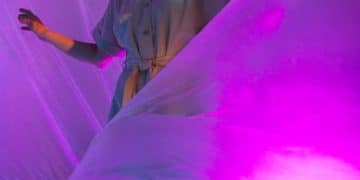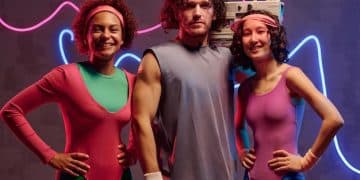The Art of Movie Poster Design: A Visual History and Modern Trends
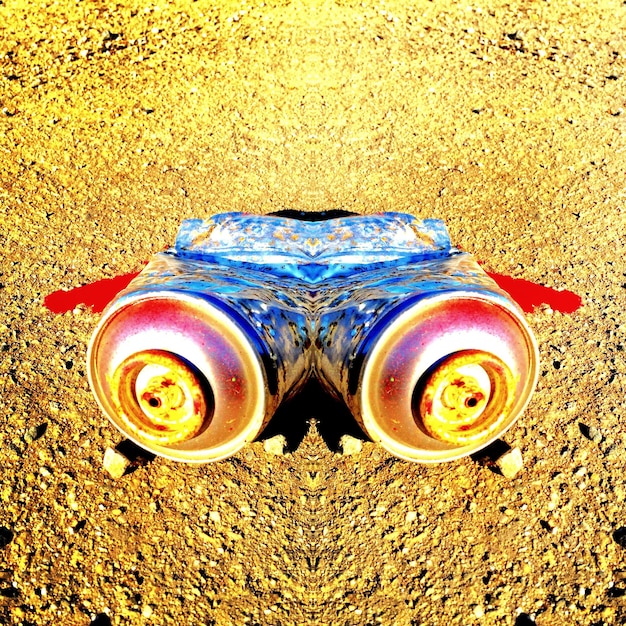
The art of movie poster design is a captivating blend of visual communication, marketing strategy, and artistic expression, evolving from hand-painted illustrations to digital masterpieces that encapsulate a film’s essence.
The **art of movie poster design: a visual history and modern trends** reflects a fascinating intersection of artistic expression and marketing strategy. We’ll explore how these vibrant advertisements have evolved from hand-painted masterpieces to digitally rendered creations, each designed to capture the essence of a film and entice audiences.
A brief history of movie poster design
Movie posters serve as a crucial visual marketing tool, conveying a film’s narrative, genre, and tone in a single, impactful image. Understanding the **art of movie poster design: a visual history and modern trends** begins with appreciating its evolution over time. The medium has undergone a phenomenal transformation, reflecting changes in both art and the film industry.
Early Beginnings: Lithography and The Silent Era
The earliest movie posters, emerging in the late 19th and early 20th centuries, relied heavily on lithography. These posters were primarily text-based, announcing screenings and highlighting key actors. The design was mostly functional aiming to draw attention in a crowded urban environment.
Golden Age Glamour: The Rise of Studio Style
The Golden Age of Hollywood (1930s-1950s) ushered in an era of glamorous, hand-painted posters. Studios developed distinct styles, often featuring idealized portrayals of stars and dramatic scenes. The goal was to create a sense of aspiration and allure, enticing audiences with the promise of escapism.
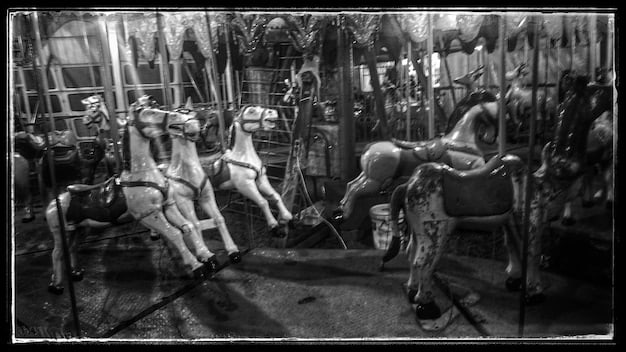
Mid-Century Modern: Experimentation and Social Commentary
Post-World War II, movie posters became more experimental. Designers began incorporating bold graphics, abstract imagery, and unconventional typography. Some posters even reflected the social and political anxieties of the time, moving beyond pure entertainment.
- Saul Bass: Revolutionized poster design with minimalist, symbolic imagery, most notably for Alfred Hitchcock’s films.
- The Polish School of Posters: A unique artistic movement characterized by painterly designs, surrealist elements, and a focus on conveying the film’s underlying themes.
- The influence of pop art: Emerged as the dominant aesthetic for movie posters, using bright colors and bold graphics to make a statement.
The history of movie posters tracks the arc of design, marketing, and art trends. Each shift underscores the delicate relationship between commerce and creativity needed for making an effective movie poster.
Key elements of effective movie poster design
An effective movie poster extends beyond mere aesthetics. It’s a strategic communication tool that aligns with the film’s identity and marketing objectives. Let’s explore the essential elements that contribute to successful **art of movie poster design: a visual history and modern trends.**
Typography: Setting the Tone
Typography plays a crucial role in conveying a film’s genre and tone. A bold, sans-serif font might suggest action or suspense, while an elegant, serif typeface could hint at romance or historical drama. Font choice influences readability and brand perception.
Imagery: Capturing the Essence
Imagery should encapsulate the film’s essence, whether through character portraits, pivotal scenes, or symbolic motifs. The color palette, composition, and artistic style should align with the film’s narrative and target audience. The image should resonate with potential viewers, creating an emotional connection.
Composition: Guiding the Eye
Composition guides the viewer’s eye, creating a visual hierarchy and emphasizing key elements. A well-balanced composition ensures that all elements work together harmoniously, avoiding visual clutter or distractions.
- Rule of thirds: Helps to create balance, interest, and tension, drawing viewers in.
- Negative space: Creates a breathing room around key elements, emphasizing information.
- Symmetry vs. asymmetry: Symmetrical designs can convey a sense of order and stability, while asymmetrical designs can create excitement.
These elements form a framework, where movie posters are created. With this framework designers can craft compelling visuals that capture attention and create a sense of intrigue.
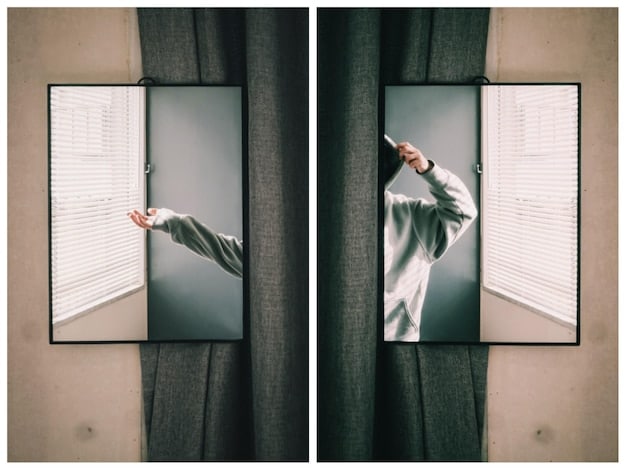
The impact of digital technology on movie poster design
The digital revolution has dramatically transformed the **art of movie poster design: a visual history and modern trends**, enabling designers to create increasingly complex and visually stunning compositions. From digital painting and photo manipulation to 3D rendering and motion graphics, technology has expanded the creative possibilities available to designers.
Software and Tools
Software like Adobe Photoshop and Illustrator have become indispensable tools for movie poster designers. These programs offer a wide range of features for image editing, compositing, typography, and special effects.
Digital Painting and Illustration
Digital painting has revolutionized the way posters are created, offering unparalleled flexibility and control over the creative process. Digital artists can create hyperrealistic renderings, surreal landscapes, and stylized character portraits with stunning detail and precision.
Photo Manipulation and Compositing
Photo manipulation and compositing techniques allow designers to seamlessly integrate multiple images into a single composition, creating visually arresting and surreal effects. These techniques are used to create epic battle scenes, fantastical landscapes, and dramatic character transformations.
Digital technology has expanded what can be done with movie posters. Designers now have the tools to make the designs that resonate best with their audience.
Modern trends in movie poster design
The world of movie poster design is constantly evolving, reflecting changes in filmmaking, marketing, and cultural tastes. Understanding the latest trends is essential for designers looking to create impactful and memorable posters. Modern **art of movie poster design: a visual history and modern trends** encapsulates themes that include minimalism, typography-centric design, and the use of textures.
Minimalism
Minimalist designs emphasize simplicity, clarity, and visual impact. These posters often feature a single, striking image or graphic element, combined with minimal typography. Minimalism is a versatile style that can be adapted to a wide range of genres.
Typography-Centric Design
Typography-centric posters place a strong emphasis on the creative use of typography. These posters may feature bold, oversized fonts, custom lettering, or innovative typographic arrangements to convey a film’s tone and message.
Texture and Materiality
Designers are increasingly experimenting with textures and material effects to add depth and visual interest to their posters. These effects can range from subtle grain and paper textures to more elaborate patterns and 3D effects.
The goal is to resonate with today’s audiences who are constantly being bombarded with visuals from multiple sources.
The role of movie posters in marketing and branding
Movie posters are more than just advertisements; they are integral components of a film’s overall marketing and branding strategy. A well-designed poster can generate buzz, build anticipation, and ultimately drive ticket sales. Exploring the **art of movie poster design: a visual history and modern trends** means understanding their strategic role in promoting a film.
Creating a Visual Identity
The movie poster helps to establish a film’s visual identity, which extends across all marketing channels, from trailers and websites to social media campaigns and merchandise. The poster acts as a visual touchstone, ensuring consistency and brand recognition.
Targeting the Audience
The design elements of the movie poster can be specifically tailored to appeal to the film’s target audience. For example, a poster for a teen romance might feature bright colors, youthful actors, and a lighthearted tone, while a poster for a horror film might employ dark imagery, suspenseful typography, and a sense of foreboding.
Building Anticipation
Strategic placement of movie posters in theaters, billboards, and online platforms contributes to building anticipation and generating buzz for the film’s release. The poster serves as a constant reminder of the upcoming film, enticing viewers to learn more and ultimately purchase tickets.
The future of movie poster design
As technology continues to evolve, the **art of movie poster design: a visual history and modern trends** is poised for further innovation. From augmented reality to interactive displays, the future holds exciting possibilities for designers and audiences alike.
Augmented Reality (AR)
Augmented reality technology could transform static posters into interactive experiences, allowing viewers to engage with characters, explore virtual environments, or unlock exclusive content. AR posters could also provide location-based information, such as showtimes and ticket availability.
Personalized Posters
Data-driven personalization could enable the creation of movie posters tailored to individual viewer preferences. By analyzing user data, algorithms could generate posters featuring specific actors, genres, or themes that resonate with each viewer’s unique tastes.
Motion Posters
Motion posters, which incorporate animated elements, video clips, or interactive features, are becoming increasingly popular on digital platforms. These dynamic posters capture attention and provide a more immersive experience than traditional static posters.
| Key Element | Brief Description |
|---|---|
| 🎨 Visual History | From lithographs to digital designs, tracing the evolution of movie poster art. |
| 💻 Digital Impact | How digital tools revolutionized poster design with enhanced capabilities. |
| ✨ Modern Trends | Exploring current styles such as minimalism, typography, and texture focus. |
| 🚀 Future Visions | Augmented reality and personalized designs are shaping the next wave of posters. |
Frequently Asked Questions
▼
The primary goal of a movie poster is to attract the attention of potential viewers and entice them to watch the film. This is achieved by effectively communicating the film’s genre, theme, and target audience.
▼
Digital technology has revolutionized movie poster design by providing designers with advanced tools for image manipulation, 3D rendering, and creating dynamic compositions. It has greatly expanded the creative possibilities.
▼
Key elements include selecting a font that matches the film’s tone, ensuring readability, creating a visual hierarchy, and using typography to draw attention to key information, like the title and release date.
▼
A movie poster is a crucial component of a film’s branding. It establishes the film’s visual identity and is consistent across all marketing. This reinforces a brand that the audience will recognize from the various components of the campaign.
▼
Emerging trends include minimalism, typography-centric designs, and the use of augmented reality and personalized posters. Motion posters are also becoming increasingly popular on digital platforms and offer an immersive experience.
Conclusion
The art of movie poster design showcases a dynamic blend of creativity and marketing strategy. Posters have evolved from simple advertisements to sophisticated works of art. They reflect both art history and technological advancements, demonstrating designers’ abilities to capture the essence of a film in a single image and engage audiences. The future of movie poster design promises further innovation with AR, personalized posters, and motion graphics, enhancing engagement and building anticipation.

